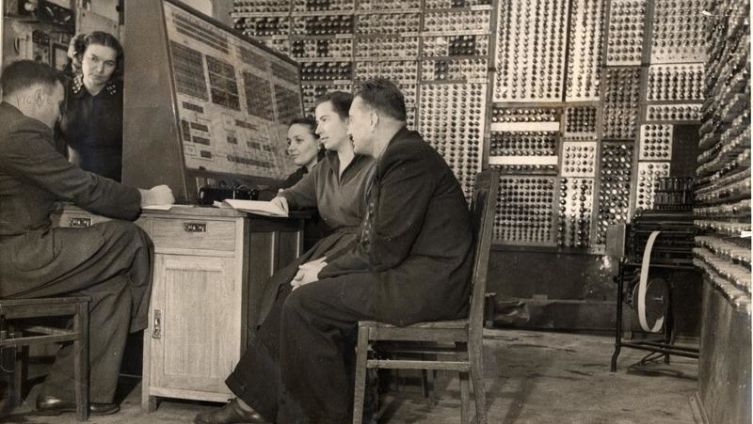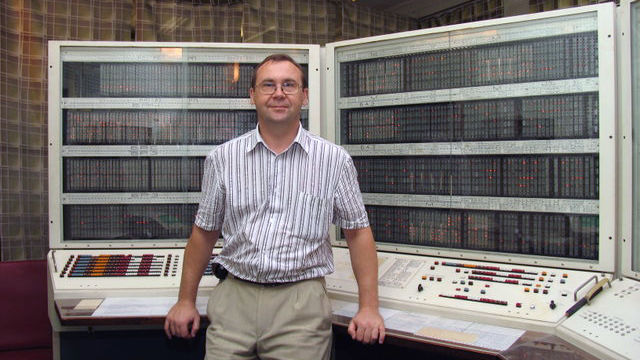Donald Davis Who invented the Internet?
 Pushkin correctly said – we are lazy and inquisitive. And in any matter, without exception. Take, for example, the Internet. The one without which most of us no longer imagine life in general and comfortable life in particular. And without which, certainly, no one could read this article. Now try to name at least one person who, so to speak, invented the Internet.
Pushkin correctly said – we are lazy and inquisitive. And in any matter, without exception. Take, for example, the Internet. The one without which most of us no longer imagine life in general and comfortable life in particular. And without which, certainly, no one could read this article. Now try to name at least one person who, so to speak, invented the Internet.
No, of course, I know that the Internet is the same child who has many fathers. This miracle of modern technology has been created over the years by thousands of people. The easier it would seem, the task. Name at least one of this thousand. I warn you that neither Bill Gates nor Steve Jobs had anything to do with the creation of the Internet. I’m afraid that silence will be my answer. Unless someone remembers WWW inventor Tim Berners-Lee or one of Google’s founding fathers Sergey Brin. Well, in this case – a set-off. By the way, will someone say what the name of S. Brin’s ally on Google is?
During this impromptu exam, for sure, no one will remember the name of the English physicist Donald Davis (Donald Watts Davies) (1924−2000). Meanwhile, it was he who stood closest to the cradle of the mighty baby. It is generally believed that the Internet originated from ARPANET, a project initiated by the Advanced Research Projects Agency (ARPA). This agency was organized in 1958 under the US government to ensure the use of advanced technologies, primarily in the military field. The goal of the ARPANET project, as many still believe, was to decentralize army command and communications lines in order to increase their survival in the event of a nuclear attack on command centers. And the military’s attention to this vital issue – this is also a common opinion – was drawn by the report of the RAND company, which in fact was the state center for strategic research. This report was presented in 1960 by a team of specialists led by a prominent electrical engineer Paul Baran (1926−2011). This report noted that in a modern war using nuclear weapons, a hierarchically organized management and communications system is unstable. If one or more of its components is damaged, such a system completely fails. A distributed communication system in which each node is connected to at least two other nodes will function even if 50 percent of these nodes are damaged. In the same report, a new way of transmitting information over distributed networks was proposed. Firstly, it was proposed to transmit messages in digital rather than analog form. Secondly, the message was proposed to be divided into small portions, “packets”, and to transmit all packets simultaneously on a distributed network. At the destination, the message was “collected” again from the packets received here. This method of transmission increased reliability and significantly increased the speed of message transmission. In fact, the ARPANET project was in no way associated with this report by RAND Corporation. His goal was completely different. ARPA wanted to connect all the computers installed in various universities in the United States and performing calculations for research funded by the agency in order to increase the efficiency of using computer equipment, which was quite expensive in those years. And the principle of “packet” information transfer was first implemented by Donald Davis on the opposite side of the Atlantic Ocean, in the UK. And, by the way, it was D. Davis who coined the term “package”, which has become one of the basic terms of the Internet. D. Davis graduated from Imperial College London, where, among other things, his outstanding mathematical abilities were noted. After graduating from college, he joined the National Physical Laboratory (NPL). Here he fell into the group of Alan Turing (Alan Mathison Turing) (1912−1954), which created the first computer in England called ACE. A. Turing was an outstanding mathematician and logician. He came up with a logical model that described any computing device, from an arithmometer to modern computers. Later this model was called the Turing universal computing machine. A. Turing was the first to ask the question “Can a machine think?” His book under this title begins with a coined wording: “I am going to consider the question: can machines think. But for this, you first need to determine the meaning of the terms “machine” and “think”. ” Logical analysis showed that a Turing machine (and, consequently, an electronic computer, a computer) can imitate the mental work of a person. Note the key word here is “simulate.” I must say that the Soviet scientific woodpeckers (from which the famous professor Vybegallo was written off) the question itself, formulated by A. Turing, led into a frenzy. A machine cannot think! The car must drive!




